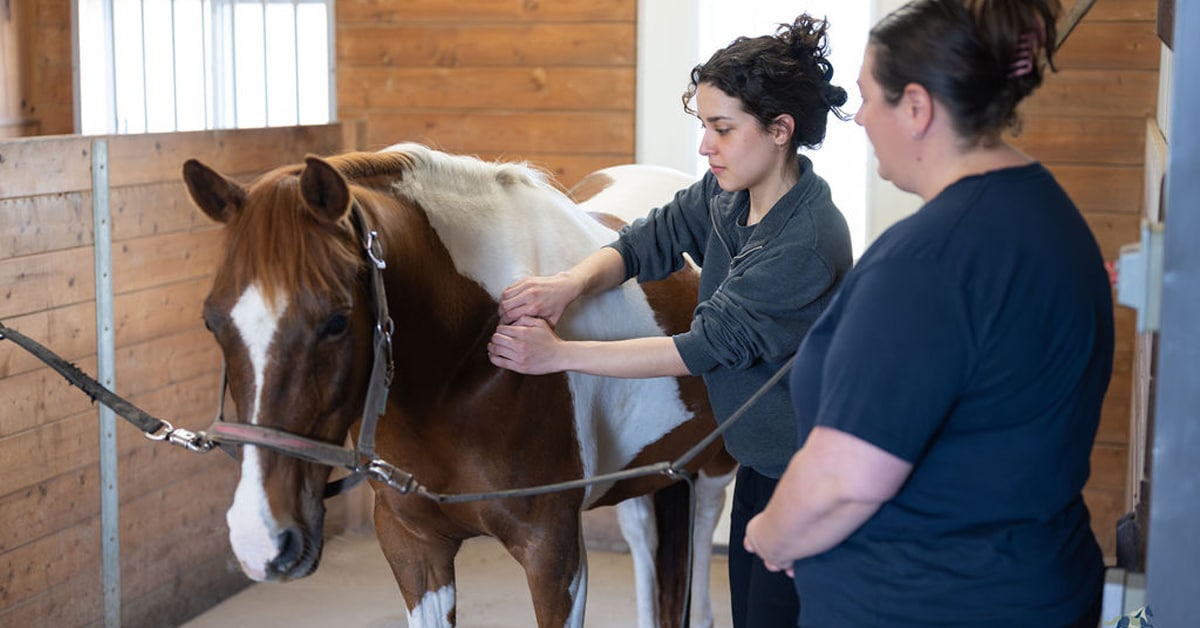If there’s one flaw most riders learning dressage share, it’s an obsession with the horse’s “frame.” We stare down at the head and neck, wanting to achieve that perfect poll-high, gracefully-arched outline that we associate with being “on the bit.”
FEI competitor, EC Level 3 dressage coach and senior status judge John MacPherson of Collingwood, ON, has one simple word of advice: Relax. MacPherson suggests that instead of worrying about the correct frame, riders should focus on whether the horse is stretching over its back and moving from behind into the contact.
Don’t think of the stretchy trot as a movement you need to work on simply because it’s in your dressage test. It’s in the test because it’s a cornerstone of fundamental dressage training and a key element to master correctly if you plan to move up the levels.
“You must develop the engagement and activity working from back to front over a supple back and topline,” says MacPherson. “This engagement and activity is necessary to carry into your advanced work to help develop the self-carriage and collection needed in the higher levels.
“One of the main reasons riders struggle with relaxation in the long-and-low trot is a lack of understanding of the movement itself,” he continues. “We want to see a horse who is stretching both forward and downwards over the back with rhythm while an elastic and consistent contact is maintained. Stretching correctly in the trot shows the true throughness of the horse and proves its balance and suppleness are established when the reins are gradually lengthened through a soft, giving hand.
“Riders often just throw the reins and contact away during the stretchy trot. When the reins are thrown away, the horse tends to drop the withers and become flat, losing balance both laterally and longitudinally, which results in a loss in rhythm and balance. The rider needs to be supple in their own body as well an allow the horse to softly take the contact and stretch and forward and down.”
To help visualize the contact, MacPherson suggests riders imagine the reins are like sticks or rods and the rider is pushing the bit down and forward from the hand, allowing the horse to softly follow the elastic contact. To visualize the relaxation and stretch required of the horse, MacPherson offers the simple image of a horse grazing in the field. “All horses can naturally graze in the field, therefore they can all stretch over the back and show a clear sign of relaxation.”
Try this at home
“There are many exercises that could be used to improve the stretchy trot, but first you want to look at the first three blocks of the training scale: Rhythm, Suppleness, and Contact. Make sure the horse is being ridden in a clear rhythm; without a clear rhythm there can be no suppleness, and without suppleness there can be no clear contact.
“Lateral exercises such as leg yield or a spiraling in-and-out exercise on a circle will help establish and develop a working contact between horse and rider with a greater acceptance of the bridle. By working the horse in and out of the circle (ie. spiral down from a 20m circle to a 15m circle and back out to 20m again) you force yourself to take control of the outside rein, thus establishing the contact.
“I also like to use accordion-type exercises, moving forward and back within the trot to help build a working contact and allowing the horse to stretch over his back and topline.”
The Latest









